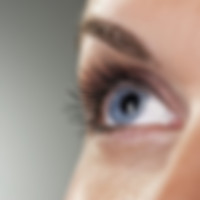
Patient-Centric
Dry Eye Services

What is Dry Eye Disease?
Dry eye is a chronic disease that requires ongoing care and treatment. There are two types of dry eye: Evaporative Dry Eye (deficient tear production) and Aqueous Deficient Dry Eye (reduced aqueous product, a clear liquid which nourishes the eye). While Evaporative Dry Eye is more common accounting for 85% of chronic dry eye cases, there can be overlap between the two.
Common Symptoms of Dry Eye Include:
-
Burning, dry or itchy eyes
-
Redness
-
Fluctuating vision
-
Tearing
-
Foreign body sensation (gritty feeling)
-
Light sensitivity
-
Contact lens intolerance

Introducing the Future of Dry Eye Care
Offering FDA-Approved OptiLight IPL Treatment for Chronic Dry Eye
This FDA-approved laser provides patients with safe, comfortable dry eye treatment administered with more precision and control than any other tool on the market. Thoughtfully designed with a custom, contoured fit for patient comfort, OptiLight provides ophthalmologists with optimal control to perform dry eye therapy with ease and precision in just 15-minute sessions, with minimal pain or discomfort.
Additional In-Office Treatments for Dry Eye
All patients begin with a thorough consultation process where we identify and diagnose the primary cause and severity of your dry eye utilizing the latest technology. We perform imaging of the tear film and Meibomian glands, diagnostic gland expression and Inflammadry testing for inflammation. This helps up to design a treatment plan that will be most effective for you.

Meibomian Gland Expression
Meibomian Gland Expression applies pressure to the meibomian glands to release the natural oils that help lubricate the eye. While LipiFlow is the most effective way to express the meibomian glands, this can also be done manually in the office. Meibomian Gland Expression is performed after all IPL treatments.

Meibomian Gland Probing
Meibomian Gland Probing is performed when the meibomian glands have already been plugged and other treatments have been ineffective. Treatment includes numbing the eyelids and inserting small probes into the gland openings to break through any scar tissue that has occurred, and to allow the eye’s natural oils to begin flowing through for healthier tear film production.

Punctual Plugs
Punctal Plugs can be applied as temporary or semi-permanent and work to block the opening where tears drain. They can be helpful but may make inflammation worse, so are typically not a first-line treatment.

Autologous Serum Tears
Autologous Serum Tears are custom-made utilizing your own blood, which allows the serum to mimic the genetic composition of your natural basal tears to treat dry eye. After having blood drawn, Autologous Serum Tears will be processed in a medical lab and mailed to you where they will require refrigeration between uses. Typically used in severe cases, Autologous Serum Tears can be a very effective treatment for dry eye.

Amniotic Membranes
An increasingly popular practice among many areas of medicine, Amniotic Membrane offers rich growth factors that promote healing and have anti-inflammatory properties. Extracted from the placental tissue, Amniotic Membrane can be applied to the surface of the eye to actively heal ocular surface damage and ease chronic dry eye in cases where other treatments have been ineffective.
SERVICES
OptiLight IPL Dry Eye Treatment + Heated Expression:
-
Add on Full Face Treatment
Package of 4 OptiLight IPL Dry Eye Treatments + Heated Expression
Meibomian Gland Probing Per Eyelid
Zest Lid Cleaning + Heated Expression
Dry Eye Evaluation, New Patient
Dry Eye Follow-Up Exam
PAYMENT OPTIONS
Financing
Financing is available through Care Credit.
Insurance
We accept most major health insurance plans, but do not accept vision insurance. This does not guarantee that we are in-network with your particular plan and it is recommended that you verify coverage with your insurance prior to scheduling your visit.
Cancellation Policy
Please be advised that we do require a credit card on file to be seen and may charge a $75
no show fee. New patients that no show will not be rescheduled. You can view our full financial policy on your patient portal.

